- Учителю
- Внеклассное мероприятие по теме История Великобритании
Внеклассное мероприятие по теме История Великобритании
СЕВАСТОПОЛЬСКАЯ СПЕЦИАЛИЗИРОВАННАЯ ШКОЛА I-III СТУПЕНЕЙ № 3
С УГЛУБЛЕННЫМ ИЗУЧЕНИЕМ АНГЛИЙСКОГО ЯЗЫКА
СЕВАСТОПОЛЬСКОГО ГОРОДСКОГО СОВЕТА
Внеклассное мероприятие
по английскому языку
MEET BRITAIN
THE PAGES OF HISTORY
Учитель английского языка
Селивончик
Надежда Никитична
г. Севастополь
2014 г.
Level: secondary school
Form: 7 forms
Objectives : to talk about the history of Great Britain;
to use the vocabulary of the topic;
to practise listening skills;
to practise speaking skills;
. to develop students' artistic skills.
Materials/aids:
Presentations, video-films from Youtube, posters, students' drawings, www.wikipedia.org.
Plan
________: Hello! _________: Hello everyone!
_________: My name is ……..
_________: And my name is ………_________:

Student 1. Look at this mysterious Stonehenge.
:When we look at it we imagine Great Britain at once. But what is it-Stonehenge? ( Students' answers)
Student 1. Stonehenge dates from between 1900 and 1600 B.C. It is made of many upright stones, standing in groups of twos. They are joined on the top by other flat stones. Was it a burial-place or a sacred place where early man worshipped the sun? It is still a mystery.
Student 2. Today we shall learn more about the history of the United Kingdom of Great Britain and Northern Ireland.
TOGETHER: The pages of History.
You know now Great Britain consists of four countries -England, Scotland, Wales and Northern Ireland. What are their capitals? (высказывания учащихся)
Look at the Union Jack- the national flag of the country. Find the mistake.
Student 3. What are the patron saints of these countries?
Student 3. Let's speak about the national emblems of these countries and the legends, connected with them. What is the national emblem of England? Wales? Scotland? Northern Ireland?
Student 2. Do you know the legend about the thistle?
( The handmade cartoon film about the thistle.) In very ancient times the Norsemen landed somewhere on the east coast of Scotland with the intention of plundering the country. The Scots assembled with their arms and located behind the river Tay. They arrived late in the day and were very tired after a long march. They rested not expecting the enemy before the next day. The Norsemen crossed the river , intending to take Scots by surprise and kill them in their sleep. They took off their shoes so as to make the least noise. But one of the Norsemen stepped on a thistle. The sudden and sharp pain he felt caused him to shriek. The alarm was given in the Scots' camp. They defeated the Norsemen and took the Thistle as the national emblem for its unexpected help.
Student 3. We can see the red right hand on the Irish coat of arms. Do you know why?
Student 6. The legend says that in the 8 th-10th centuries the Vikings from Scandinavia were sailing by Ireland.
Two Viking chiefs decided that one of them would become the king of Ireland. The one who would first touch Irish soil would become King. They set off in their big boats. The race was very even and each crew did everything to win the race. When they were quite close to the shore Heremon O'Neil, that was the name of the Viking chief, that became king, cut off his right hand and threw it on the land. It is due to this that the red right hand had been a part of the coat of arms of Ireland ever since.
1.The scene - a group of students.
Two thousand years ago, in the year fifty five before our era… Heavy clouds are over a stormy sea. Eighty Roman ships are sailing on the grey waters to the unknown land.
Julius Caesar is on the first galley, surrounded by his centurions. All are looking at the distant shore. "By Jupiter!" - says Julius Caesar, is that a cloud in front or a mountain covered with snow? "Where? Over there?" "Oh," - says one of the centurions, «Those are cliffs, I can see them very well». - "Yes, they are cliffs- and they are white."
- - "Yes, they are cliffs- and they are white."
- "The land behind them must be white, too."
- "It is a White Land," exclaims Julius Caesar. "We shall call it Albion."
- "Albion, Albion!" shouted the others. Alba in Latin means white, and the name Albion remains to this day.
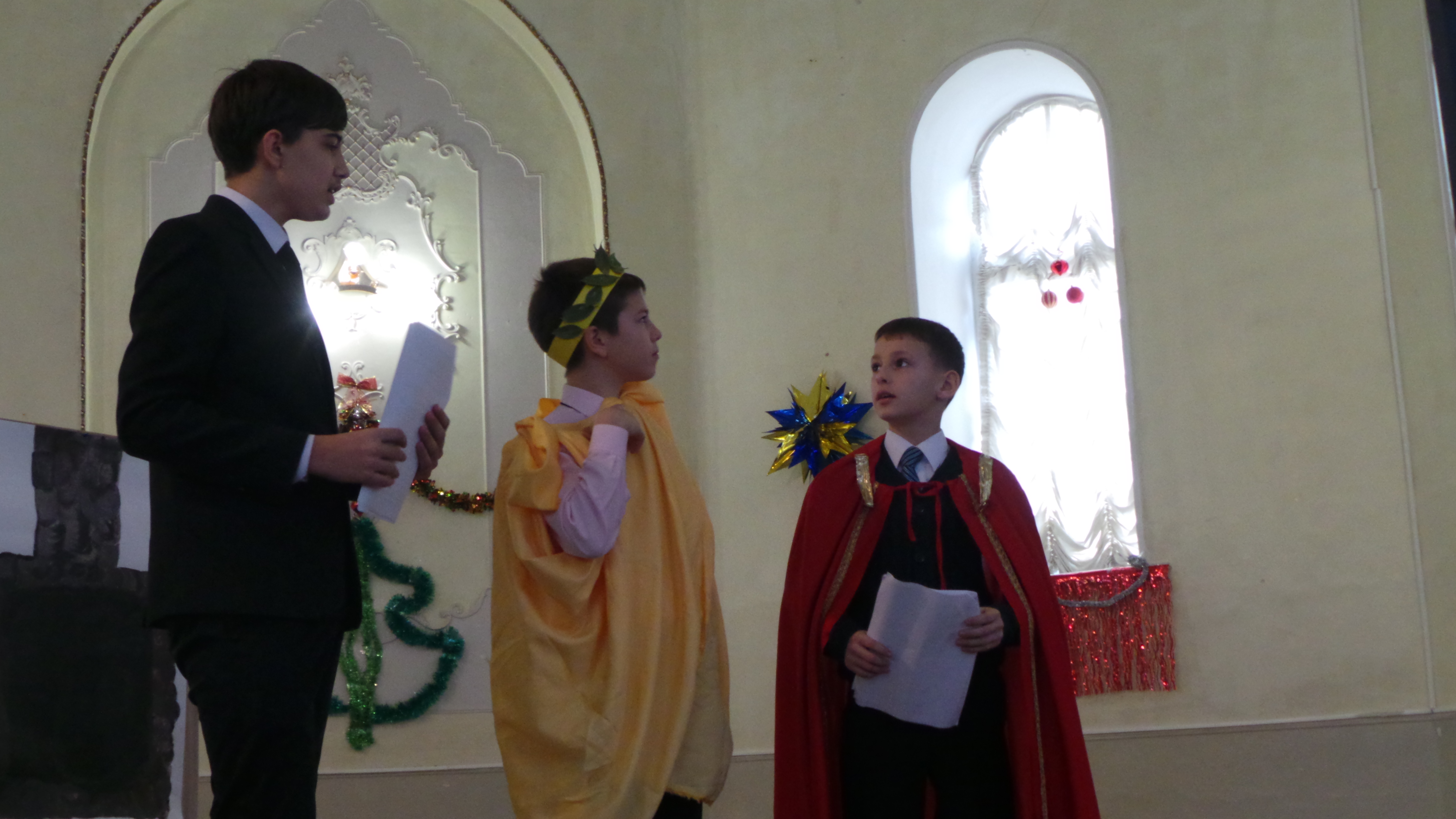
Student 3.
The Romans came to a small settlement named Llyndin(which means a lonely port) on the banks of the river Thames. Britain was conquered and for 400 years remained a Roman province.
Student 1. Look at this female figure. Do you know its name? (Students' answers)
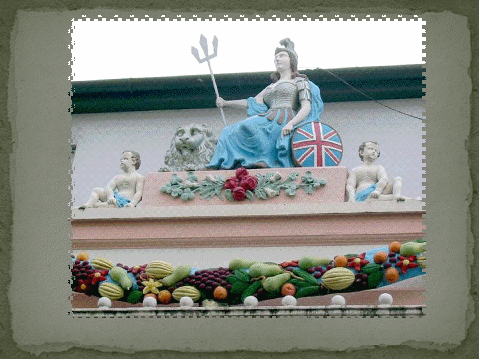
Britannia is an ancient term for Roman Britain. Britannia is usually shown sitting down, wearing a helmet and holding a trident. Next to her feet she has a shield with the design of the British flag on it. Britannia was shown on some Roman coins.
Student 3 : In the fifth century the Romans left Britain, other invaders came to the British shores. The Saxon hordes and the Danes rushed to Londinium, conquered the land and ruined the city. During nearly 400 years Londinium lay in ruins, grass grew where the beautiful buildings had been before, wild beasts walked on the good Roman road.
In 1066 William the Duke of Normandy with a numerous army landed in the south of England. The battle between the Normans and the Anglo-Saxons took place on the 14-th of October 1066 at a little village called Hastings. The country came under the power of the new conquerors - the
Normans.
William the Conqueror:
Good afternoon, respected public!
Let me introduce myself. I'm William the Conqueror. The strongest and the mightiest force is my main weapon. I defeated Harold honestly. That's why I must be the king. We, Normans, are better educated and we'll make this country civilised.
Student 2: In the second half of the 15-th century Civil War began in England. It was the Wars of Roses between two parts of the English royal family. One family was called Lancaster and was represented by a red rose, and the other was called York and was represented by a white rose. Each one wanted its own leader to be king. Henry Tudor defeated and killed Richard III at Bosworth Field on 22, 1485 and brought the House of Tudors to power.
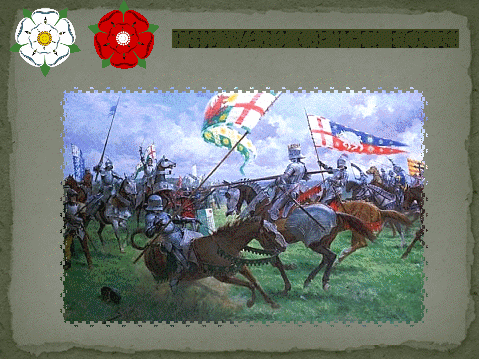
Student 1: What other ruling houses of Great Britain do you know? (The students' answers) (the House of Plantagenot (1216-1399), the House of Lancaster(1399-1461), the House of York (1483-1487), the House of Tudor (1485-1603), the House of Stuart (1603-1714), the House of Hanover (1714-1901).
Student 3:
The most well-known monarchs of England were Henry VIII and Elizabeth his daughter.
-
In the 16-th century the monarchy was stronger than ever before. The Tudors established peace throughout England. It was ruled by mighty Monarchs at first Henry VIII and then Elizabeth I. Henry VIII( 1491-1547) became the king of England and Ireland on the 22 of April 1509. In his youth he was athletic and highly intelligent. A contemporary observer described him thus: "he speaks good French, Latin and Spanish, he is very religious. He is extremely fond of hunting. He is also fond of tennis." His interests included writing both books and music. He was a player of many instruments and a composer. Henry VIII was a patron of arts. He was a clever ruler. He invested
in the Navy and increased its size from 5 to 53 ships. Henry's policy led to the formation of the Church of England. Student 4:The reign of Queen Elizabeth I is often referred to as "the Golden Age of English history. She is still one of the best loved monarchs and one of the most admired rulers of all time. Elizabeth was the daughter of king Henry VIII. "I may not be a lion, but I am a lion's cub, and I have a lion's heart" she said. As a child Elizabeth was given a very impressive education. She was taught by famous scholars and from an early age it was clear that she was remarkably gifted. She had a talent for languages and by adulthood she could speak five languages fluently. She loved all kinds of sport, especially horse riding and hunting. She loved music and dancing, she could even play the lute with skill. She was dedicated to her country. When she died England was one of the most powerful countries in the world.
Find the wrong sentence in this slide.

Student 2. But a tragic event happened in 1666, the year after the Plague. This story could be called the Great Fire of London. 3000 houses and at least 97 churches were destroyed through a small bundle of wood. A young and careless Baker left it at night near a very hot oven.
In a few hours big flames were seen along the narrow street. All the houses, made of wood, soon were burning like paper. There were a lot of pigeons in London. They didn't want to leave the burning houses and flew and flew about the windows and the roofs, till they burned their wings and fell down dead. The Lord Mayor of London with the noblemen came on the scene, the soldiers were all mobilised, and the king ordered the houses around the fire to be pulled down. Many hundreds of houses were destroyed. Soon the wind changed, then stopped blowing, then a heavy rain fell. London- what was left of it- was saved. The fire was very important for modern London, it cleared away the Plague for ever.
And a new London, a London of stone, with wider streets and better houses was built.
Student 3: The head of state is the Queen,
Elizabeth the second. She has been ruling the country since 1952
year. 
Do you know what dynasty or the house as they call it in Great Britain she belongs to? (the House of Windsor).
Student 1: Look at this person. Do you know his name? (Students' answers)

Student 1. Yes, John Bull is a typical Englishman. He is shown in pictures and cartoons- a large fat man, wearing high leather boots, a waistcoat with the pattern of the Union Jack ( the national flag) and a bulldog beside him. He is thought of as being very proud of England and as disliking foreigners.
Student 5: In this photo you can see a group of police officers of Great Britain. The London police force was created in 1829 by an act introduced in Parliament by the home secretary- Sir Robert Peel. What is the nickname for a policeman in Great Britain?
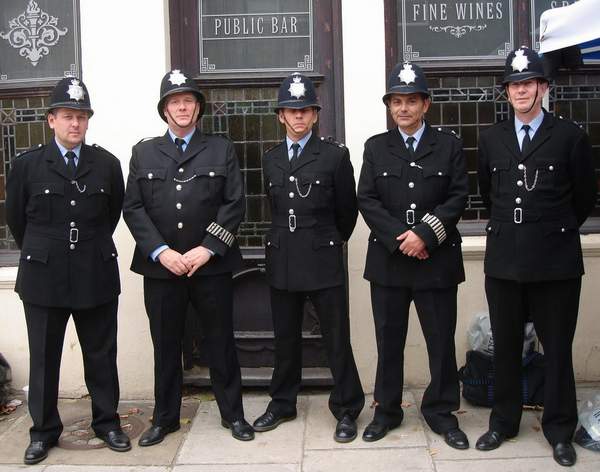
Student 5. The people call them "Bobbies".
Student 3: Great Britain has given the world a lot of famous people: scientists and writers, explorers and inventors, military and political leaders. Can you name some of them? ( Students' answers.)
Who said these words? "England expects that every man will do his duty". The portrait of this man will help you.
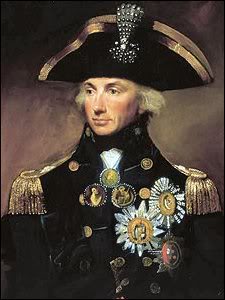
( Students' answers)
Student 2. Yes, these words belong to Admiral Nelson, Britain's most famous naval leader. He lost an arm and the sight in one eye during the wars against Napoleon. Nelson became very popular after winning several important battles at sea. His most famous battle was the battle at Trafalgar in 1805, in which he was killed. After his death Trafalgar Square and Nelson's Column were built to honour him.
Today we have spoken much about the history of Great Britain and let's finish our party with a popular national song called Rule, Britannia!
«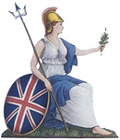 Правь,
Британия, морями!» (англ. «Rule, Britannia!») - патриотическая
песня Великобритании, написана по поэме Джеймса Томсона на музыку
Томаса Арна в 1740.
Правь,
Британия, морями!» (англ. «Rule, Britannia!») - патриотическая
песня Великобритании, написана по поэме Джеймса Томсона на музыку
Томаса Арна в 1740.
Была написана к маскараду в доме Фредерика, принца Уэльского,
который покровительствовал обоим авторам.
"Rule, Britannia!" is a British patriotic song, originating from the poem "Rule,Britannia" by James Thomson and set to music by Thomas Arne in 1740. . It has become the unofficial national anthem of the United Kingdom.
Известна, благодаря двухстрочному рефрену в конце каждой строфы,
собственно и давший имя песне:
Rule, Britannia! Rule the waves:
Britons never shall be slaves.
Перевод:
Правь, Британия! Британия, правь волнами:
Британцы никогда не будут рабами.
When Britain first, at Heaven\'s command
Arose from out the azure main;
This was the charter of the land,
And guardian angels sang this strain:
"Rule, Britannia! rule the waves:
"Britons never will be slaves.
The results of the competition.